Our research team regularly publishes in conferences and journals. Below you find a selection of academic papers, thesis and reports. We are open to scientific exchange.
Publications
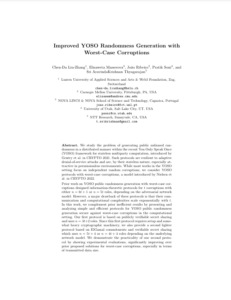
Improved YOSO Randomness Generation with Worst-Case Corruptions
Published in International Conference on Financial Cryptography and Data Security -- FC 2024.
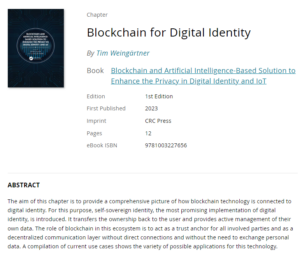
Blockchain for Digital Identity
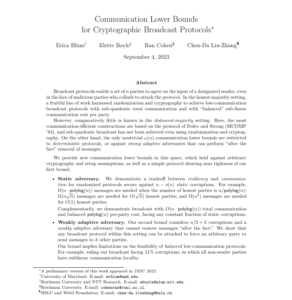
Communication Lower Bounds for Cryptographic Broadcast Protocols
Published in 37th International Symposium on Distributed Computing -- DISC 2023. Invited to the DISC Special Issue of the Journal of Distributed Computing.
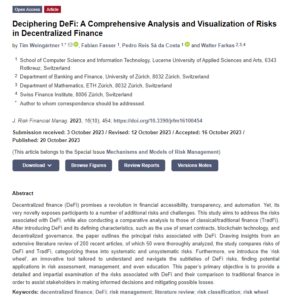
Deciphering DeFi: A Comprehensive Analysis and Visualization of Risks in Decentralized Finance
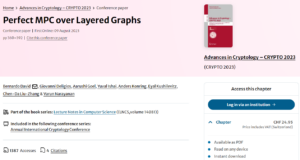
Perfect MPC over Layered Graphs
Published in Annual International Cryptology Conference -- CRYPTO 2023.
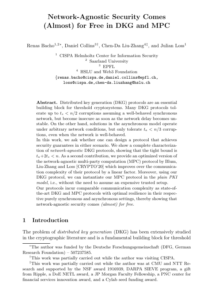
Network-Agnostic Security Comes for Free in DKG and MPC
Published in Annual International Cryptology Conference -- CRYPTO 2023.
Cryptocurrency Risk, Trust, and Acceptance in Thailand: A Comparative Study with Switzerland
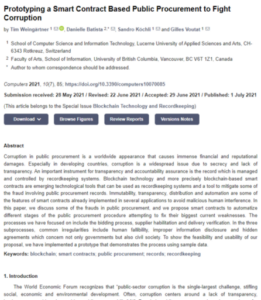
Prototyping a smart contract based public procurement to fight corruption
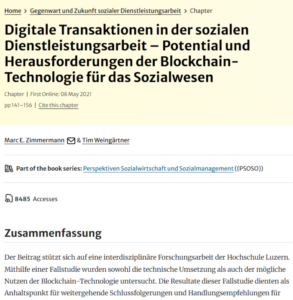
Digitale Transaktionen in der sozialen Dienstleistungsarbeit–Potential und Herausforderungen der Blockchain-Technologie für das Sozialwesen
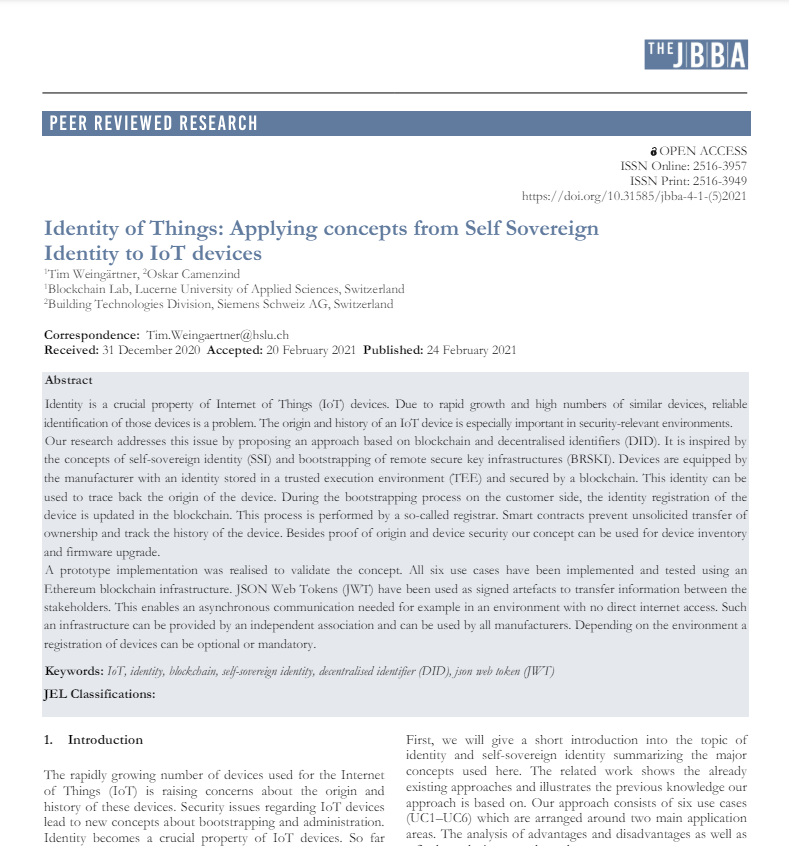
Identity of things: Applying concepts from self sovereign identity to IoT devices
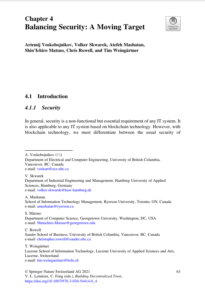
Balancing Security: A Moving Target
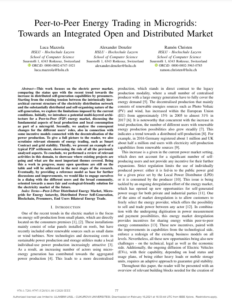
Peer-to-peer energy trading in microgrids: Towards an integrated open and distributed market
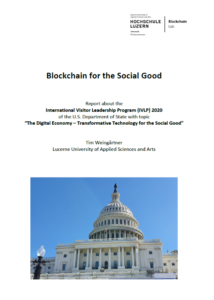
Blockchain for the Social Good
The IVLP (International Visitor Leadership Program) is an “on invitation only” program by the U.S. State Department with each group having a special topic and visiting selected spots in the United States. I had the honor of being invited to the IVLP 2020 with topic “The Digital Economy – Transformative Technology for the Social Good”. The goal of the program was to learn about digital economy and innovations in the U.S., meet with advocate, start-ups, investors and contributors, and learn about blockchain projects and the impact of crypto currencies on national economies. Our group consisted of 18 participants from 16 countries. The following report summarizes the main lessons learned from my visit in the USA. From the numerous presentations and meetings, I picked the most important regarding blockchain technology. This selection reflects my personal opinion on the contents.
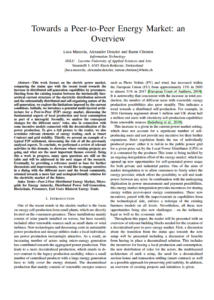
Towards a Peer-to-Peer Energy Market: an Overview
This work focuses on the electric power market, comparing the status quo with the recent trend towards the increase in distributed self-generation capabilities by prosumers. Starting from the existing tension between the intrinsically hierarchical current structure of the electricity distribution network and the substantially distributed and self-organising nature of the self-generation, we explore the limitations imposed by the current conditions. Initially, we introduce a potential multi-layered architecture for a Peer-to-Peer (P2P) energy market, discussing the fundamental aspects of local production and local consumption as part of a microgrid. Secondly, we analyse the consequent changes for the different users' roles, also in connection with some incentive models connected with the decentralisation of the power production. To give a full picture to the reader, we also scrutinise relevant elements of energy trading, such as Smart Contract and grid stability. Thirdly, we present an example of a typical P2P settlement, showcasing the role of all the previously analysed aspects. To conclude, we performed a review of relevant activities in this domain, to showcase where existing projects are going and what are the most important themes covered. Being this a work in progress, many open questions are still on the table and will be addressed in the next stages of the research. Eventually, by providing a reference model as base for further discussions and improvements, we would like to engage ourselves in a dialog with the different users and the broad community, oriented towards a more fair and ecological-friendly solution for the electricity market of the future.
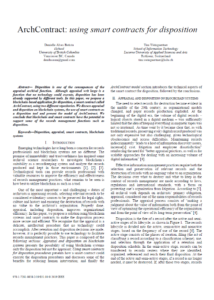
ArchContract: using smart contracts for disposition
Disposition is one of the consequences of the appraisal archival function. Although appraisal writ large is a function that no technology could execute, disposition has been already supported by different tools. In this paper, we propose a blockchain-based application for disposition, a smart contract called ArchContract, using two different repositories. We discuss appraisal and disposition on blockchain systems, the use of smart contracts as a disposition tool and present the model of ArchContract. We conclude that blockchain and smart contracts have the potential to support some of the records management functions such as disposition.
Towards a trusted support platform for the job placement task
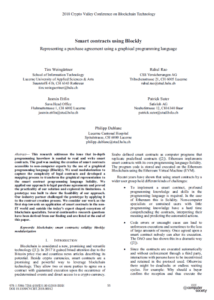
Smart Contracts Using Blockly: Representing a Purchase Agreement Using a Graphical Programming Language
This research addresses the issue that in-depth programming knowhow is needed to read and write smart contracts. The goal was making the creation of smart contracts accessible to non-computer experts by the use of a graphical programming language (Blockly). We used modularization to capture the complexity of legal contracts and developed a mapping process to transform the graphical representation to the smart contract programming language Solidity. We applied our approach to legal purchase agreements and proved the practicality of our solution and explored its limitations. A prototype was built to show the feasibility of our approach. Our industry partner challenged the prototype by applying it to the contract creation process. We consider our work as the first step towards an application of smart contracts in the non-IT world and outside the today's expert shaped ecosystem of blockchain specialists. Several continuative research questions have been derived from our finding and are listed at the end of this paper.
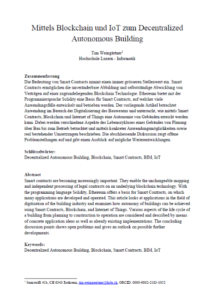
Mittels Blockchain und IoT zum Decentralized Autonomous Building
Smart contracts are becoming increasingly important. They enable the unchangeable mapping and independent processing of legal contracts on an underlying blockchain technology. With the programming language Solidity, Ethereum offers a basis for Smart Contracts, on which many applications are developed and operated. This article looks at applications in the fields of digitisation of the building industry and examines how autonomy of buildings can be achieved using Smart Contracts, Blockchain, and Internet of Things. Various aspects of the life cycle of a building from planning to construction to operation are considered and described by means of concrete application ideas as well as already existing implementations. The concluding discussion points shows open problems and gives an outlook on possible further developments.
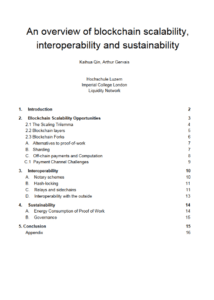
An overview of blockchain scalability, interoperability and sustainability
Since Bitcoin's introduction, have the non-custodial financial and programmable possibilities of blockchain attracted extensive worldwide attention. Similar to other groundbreaking and novel technologies, blockchain still suffers from fundamental internal and external issues. This high level report revolves around three themes – scalability, interoperability and sustainability of nowadays blockchains.
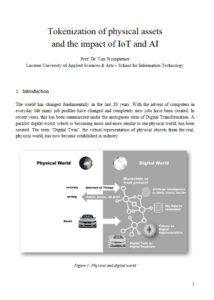
Tokenization of physical assets and the impact of IoT and AI
The world has changed fundamentally in the last 20 years. With the advent of computers in everyday life many job profiles have changed and completely new jobs have been created. In recent years, this has been summarized under the ambiguous term of Digital Transformation. A parallel digital world, which is becoming more and more similar to our physical world, has been created. The term "Digital Twin", the virtual representation of physical objects from the real, physical world, has now become established in industry.
Theses
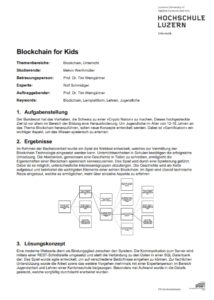
Blockchain for Kids
Der Bundesrat hat das Vorhaben, die Schweiz zu einer «Crypto Nation» zu machen. Dieses hochgesteckte Ziel ist vor allem im Bereich der Bildung eine Herausforderung. Um Jugendliche im Alter von 12-16 Jahren an das Thema Blockchain heranzuführen, sollen neue Konzepte entwickelt werden. Dabei ist «Gamification» ein wichtiger Aspekt, um das Wissen spielerisch zu erlernen.
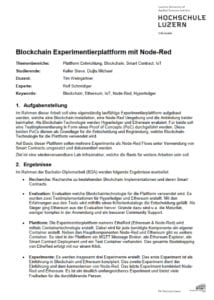
Blockchain Experimentierplattform mit Node-Red
Im Rahmen dieser Arbeit soll eine eigenständig lauffähige Experimentierplattform aufgebaut werden, welche eine Blockchain-Installation, eine Node-Red Umgebung und die Anbindung beider beinhaltet. Als Blockchain-Technologie werden Hyperledger und Ethereum evaluiert. Für beide soll eine Testimplementierung in Form eines Proof of Concepts (PoC) durchgeführt werden. Diese beiden PoCs dienen als Grundlage für die Entscheidung und Begründung, welche Blockchain-Technologie für die Plattform verwendet wird. Auf Basis dieser Plattform sollen mehrere Experimente als Node-Red Flows unter Verwendung von Smart Contracts umgesetzt und dokumentiert werden. Ziel ist eine wiederverwendbare Lab-Infrastruktur, welche die Basis für weitere Arbeiten sein soll.
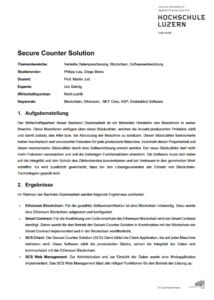
Secure Counter Solution
Der Wirtschaftspartner dieser Bachelor Diplomarbeit ist ein führender Hersteller von Maschinen in seiner Branche. Diese Maschinen verfügen über einen Stückzähler, welcher die Anzahl produzierten Produkte zählt und damit zulässt, das Alter bzw. die Abnutzung der Maschine zu schätzen. Dieser Stückzähler funktionierte bisher mechanisch und verursachte Fixkosten für jede produzierte Maschine. Innerhalb dieser Projektarbeit soll dieser mechanische Stückzähler durch eine Softwarelösung ersetzt werden. Der neue Stückzähler darf nicht mehr Fixkosten verursachen und soll die bisherigen Funktionalitäten erweitern. Die Software muss sich dabei auf die Integrität und den Schutz des Zählerstandes konzentrieren und ein Vertrauen in den generierten Wert schaffen. Es wird zusätzlich gewünscht, dass bei den Lösungsvarianten der Einsatz von Blockchain-Technologien geprüft wird.
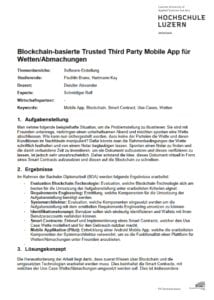
Blockchain-basierte Trusted Third Party Mobile App für Wetten/Abmachungen
Man nehme folgende beispielhafte Situation, um die Problemstellung zu illustrieren: Sie sind mit Freunden unterwegs, verbringen einen unterhaltsamen Abend und möchten spontan eine Wette abschliessen. Wie kann nun sichergestellt werden, dass keine der Parteien die Wette und deren Konditionen im Nachhinein manipuliert? Dafür könnte man die Rahmenbedingungen der Wette schriftlich festhalten und von einem Notar beglaubigen lassen. Spontan einen Notar zu finden und die damit verbundene Zeit zu investieren, um ein Dokument aufzusetzen und dieses verifizieren zu lassen, ist jedoch sehr unwahrscheinlich. Daher entstand die Idee, dieses Dokument virtuell in Form eines Smart Contracts aufzusetzen und diesen auf die Blockchain zu schreiben.
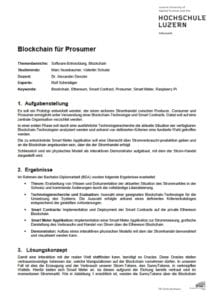
Blockchain für Prosumer
Es soll ein Prototyp entwickelt werden, der einen sicheren Stromhandel zwischen Producer, Consumer und Prosumer ermöglicht unter Verwendung einer Blockchain-Technologie und Smart Contracts. Dabei soll auf eine zentrale Organisation verzichtet werden. In einer ersten Phase soll durch eine ausführliche Technologierecherche die aktuelle Situation der verfügbaren Blockchain-Technologien analysiert werden und anhand von definierten Kriterien eine fundierte Wahl getroffen werden. Die zu entwickelnde Smart Meter Applikation soll eine Übersicht über Stromverbrauch/-produktion geben und an die Blockchain angebunden sein, über die der Stromhandel erfolgt. Schliesslich wird ein physisches Modell als interaktiven Demonstrator aufgebaut, mit dem der Strom-Handel dargestellt wird.
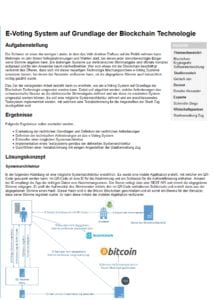
E-Voting System auf Grundlage der Blockchain Technologie
Die Schweiz ist eines der wenigen Länder, in dem das Volk direkten Einfluss auf die Politik nehmen kann. Mehrmals im Jahr finden Volksabstimmungen und Wahlen statt, bei denen jeder stimmberechtigte Bürger seine Stimme abgeben kann. Die bisherigen Systeme zur elektronischen Stimmabgabe sind oftmals komplex aufgebaut und für den Anwender kaum nachvollziehbar. Wer sich etwas mit der Blockchain beschäftigt vernimmt des Öfteren, dass sich mit dieser neuartigen Technologie fälschungssichere e-Voting Systeme umsetzen lassen, bei denen der Anwender verifizieren kann, ob die abgegebene Stimme auch tatsächlich richtig gezählt wurde. Das Ziel der vorliegenden Arbeit besteht darin zu ermitteln, wie ein e-Voting System auf Grundlage der Blockchain Technologie umgesetzt werden kann. Dabei soll abgeklärt werden, welche Anforderungen das schweizerische Gesetz an die elektronische Stimmabgabe definiert und wie diese im erwähnten System umgesetzt werden können. Es soll eine mögliche Systemarchitektur definiert und ein anschliessendes Testsystem implementiert werden, mit welchem eine Testabstimmung für die Angestellten der Stadt Zug durchgeführt wird.
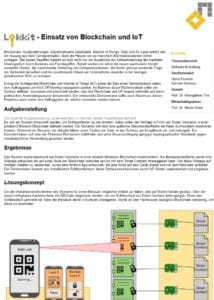
Lokkit – Einsatz von Blockchain und IoT
Es soll ein System entwickelt werden, um Schliessfächer zu (ver-)mieten. Dabei sollen die Verträge in Form von Smart Contracts in einer privaten Ethereum Blockchain definiert werden. Ein Benutzer soll über eine grafische Benutzeroberfläche ein freies Schliessfach reservieren können. Während der Benutzer der aktuelle Mieter eines Faches ist, kann er das Schloss per Knopfdruck ver- und entriegeln. Die Kommunikation soll über die Etheruem Blockchain stattfinden und unter Berücksichtigung gängiger kryptographischer Standards gegen missbräuchliche Verwendung gesichert werden.


